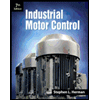
The difference between atomic structure and crystal structure.
Explanation of Solution
Introduction: The atomic structure describes the arrangement of the subatomic particles in an atom, whereas the crystal structure describes the arrangement of atoms or molecules in a crystalline compound.
Explanation:
The atomic structure describes the arrangement of the subatomic particles in an atom. It is a complex structure. In this structure, proton and neutrons are present together and the electrons are present orbiting around them. This forms the structure of an atom. The overall structure is the same for all atoms.
The crystal structure describes the arrangement of atoms or molecules in a crystalline compound. It is a well organized lattice structure. Crystalline structures are composed of the cations and anions. The crystal structures are different from each other.
Conclusion:
The difference between the atomic structure and crystalline structure is described on the basis of structure and components.
Want to see more full solutions like this?
Chapter 3 Solutions
Fundamentals of Materials Science and Engineering, Binder Ready Version: An Integrated Approach
- Refer to page 5 for MapReduce fundamentals. Instructions: 1. Analyze the link to understand how MapReduce divides tasks into mappers and reducers. 2. Discuss the advantages of parallel processing in distributed systems. 3. Evaluate how the number of mappers and reducers affects performance for different workload sizes. Link: [https://drive.google.com/file/d/1wKSrun-GlxirS3IZ9qoHazb9tC440 AZF/view?usp=sharing]arrow_forwardRefer to page 11 for HDFS compression techniques. Instructions: 1. Analyze the link to explore the impact of compression formats like Snappy, Gzip, and Parquet. 2. Discuss the trade-offs between compression speed and storage savings. 3. Evaluate how compression affects data processing performance. Link: [https://drive.google.com/file/d/1wKSrun-GlxirS31Z9qoHazb9tC440AZF/view?usp=sharing]arrow_forwardRefer to page 9 for fault tolerance mechanisms. Instructions: 1. Analyze the fault tolerance strategies in the link, focusing on replication and heartbeats. 2 Discuss how HDFS handles node failures and ensures data availability. 3 Evaluate the trade-offs between high replication factors and storage efficiency. Link: [https://drive.google.com/file/d/1wk Srun-GlxirS3IZ9qoHazb 9tC440AZF/view?usp=sharing]arrow_forward
- Refer to page 3 for replication strategies in HDFS. Instructions: 1. Analyze the link to understand how replication ensures fault tolerance. 2. Discuss the trade-offs of increasing replication factors on storage costs and fault recovery 3. time. Evaluate strategies to dynamically adjust replication factors based on data importance. Link: [https://drive.google.com/file/d/1wKSrun-GlxirS31Z9qoHazb9tC440 AZF/view?usp=sharing]arrow_forwardRefer to page 4 for ARP protocol details. Instructions: 1. Analyze ARP traffic in the link to understand how MAC addresses are resolved. 2. Discuss the importance of ARP in bridging network layers. 3. Highlight vulnerabilities, such as ARP spoofing, and propose mitigation techniques. Link: [https://drive.google.com/file/d/1wKSrun-GlxirS31Z9qoHazb9tC440 AZF/view?usp=sharing]arrow_forwardRefer to page 10 for DNS operations. Instructions: 1. Analyze DNS traffic in the link to understand the resolution process for domain names. 2. Discuss the roles of recursive and authoritative DNS servers. 3. Evaluate vulnerabilities like DNS spoofing and propose mitigation strategies. Link: [https://drive.google.com/file/d/1wKSrun-GlxirS31Z9qoHazb9tC440AZF/view?usp=sharing]arrow_forward
- Refer to page 7 for comparisons between HDFS and other storage systems. Instructions: 1. Analyze the design differences in the link between HDFS and systems like S3 or Ceph. 2. Discuss the advantages of block-based storage versus object-based storage. 3. Evaluate use cases where one system outperforms the other in terms of cost and performance. Link: [https://drive.google.com/file/d/1wKSrun-GlxirS3IZ9qo Hazb9tC440 AZF/view?usp=sharing]arrow_forwardRefer to page 8 for VPN configurations. Instructions: 1. Analyze the VPN traffic in the link to understand how encryption protects data in transit. 2. Discuss the pros and cons of IPsec vs. SSL VPNs. 3. Evaluate the potential risks of VPN misconfigurations and suggest secure deployment practices. Link: [https://drive.google.com/file/d/1wKSrun-GlxirS31Z9qoHazb9tC440 AZF/view?usp=sharing]arrow_forwardRefer to page 2 for an introduction to TCP/IP protocols. Instructions: 1. 2. 3. Analyze the link to understand the four layers of TCP/IP. Discuss the role of TCP in reliable communication and IP in addressing and routing. Evaluate the potential impact of misconfigured IP addresses on network performance. Link: [https://drive.google.com/file/d/1wKSrun-GlxirS3IZ9qoHazb9tC440 AZF/view?usp=sharing]arrow_forward
- Refer to page 1 for an overview of HDFS architecture. Instructions: 1. Analyze the basic HDFS architecture in the link to understand the roles of NameNode, DataNode, and Secondary NameNode. 2. Discuss the importance of separating metadata and actual data for scalability. 3. Evaluate how HDFS differs from traditional file systems in handling large-scale datasets. Link: [https://drive.google.com/file/d/1wKSrun-GlxirS3IZ9qoHazb9tC440 AZF/view?usp=shaarrow_forwardRefer to page 6 for ICMP protocol analysis. Instructions: 1. 2. 3. Analyze the packet structure in the link to understand the role of ICMP in diagnostics. Discuss how tools like ping and traceroute use ICMP for network troubleshooting. Evaluate potential risks, such as ICMP flooding, and suggest mitigation strategies. Link: [https://drive.google.com/file/d/1wKSrun-GlxirS3IZ9qo Hazb9tC440 AZF/view?usp=sharing]arrow_forwardQ1: If the input x[n] = [001111] is applied to a discrete-time LTI system of impulse response h[n] = [321]. Using z-transform, find the output y[n] of the system.arrow_forward
 MATLAB: An Introduction with ApplicationsEngineeringISBN:9781119256830Author:Amos GilatPublisher:John Wiley & Sons Inc
MATLAB: An Introduction with ApplicationsEngineeringISBN:9781119256830Author:Amos GilatPublisher:John Wiley & Sons Inc Essentials Of Materials Science And EngineeringEngineeringISBN:9781337385497Author:WRIGHT, Wendelin J.Publisher:Cengage,
Essentials Of Materials Science And EngineeringEngineeringISBN:9781337385497Author:WRIGHT, Wendelin J.Publisher:Cengage, Industrial Motor ControlEngineeringISBN:9781133691808Author:Stephen HermanPublisher:Cengage Learning
Industrial Motor ControlEngineeringISBN:9781133691808Author:Stephen HermanPublisher:Cengage Learning Basics Of Engineering EconomyEngineeringISBN:9780073376356Author:Leland Blank, Anthony TarquinPublisher:MCGRAW-HILL HIGHER EDUCATION
Basics Of Engineering EconomyEngineeringISBN:9780073376356Author:Leland Blank, Anthony TarquinPublisher:MCGRAW-HILL HIGHER EDUCATION Structural Steel Design (6th Edition)EngineeringISBN:9780134589657Author:Jack C. McCormac, Stephen F. CsernakPublisher:PEARSON
Structural Steel Design (6th Edition)EngineeringISBN:9780134589657Author:Jack C. McCormac, Stephen F. CsernakPublisher:PEARSON Fundamentals of Materials Science and Engineering...EngineeringISBN:9781119175483Author:William D. Callister Jr., David G. RethwischPublisher:WILEY
Fundamentals of Materials Science and Engineering...EngineeringISBN:9781119175483Author:William D. Callister Jr., David G. RethwischPublisher:WILEY





